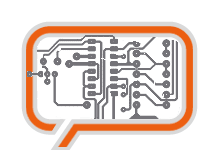A weblog focused on interesting circuits, ideas, schematics and other information about microelectronics and microcontrollers.
E-books
Disclaimer
Because I have not tested all electronic circuits mentioned on this pages, I cannot attest to their accuracy; therefore, I do not provide a warranty of any kind and cannot be held responsible in any manner.
IDE controller
An IDE interface for a microcontroller using an 8255 by Peter Faasse
From a controller point of view an IDE interface could be described as a set of I/O ports. The IDE interface has a 8/16 bits I/O bus, two /CS lines, a /WR and /RD line, three address bits and one interrupt. In this description I assume the most traditional IDE interface. I only use the so-called PIO mode 0. This is the slowest communication modus on an IDE bus. It is also the easiest one to implement. The data bus on an IDE interface is used mostly for 8-bits transfers. Only the real disk data reads and writes use the 16-bits bus in full width. You COULD even implement an IDE interface with an 8-bits only data bus. That would mean that you use only half the disk capacity (the lower bytes of the 16-bits-wide bus) but that should work.
When scanning the net I did find an implementation of an IDE interface for 8-bit controllers. It was implemented in TTL, just like the magazine's interface. The main idea was that whenever a (16-bits) word was read from the IDE bus the upper 8 bits where stored in a latch. The controller could retrieve them from the latch later. Writing to the IDE bus was implemented in the same manner. The IDE bus read/write cycles where in fact simple bus read and write cycles. At first I was about to copy this design. When thinking about it I thought that this TTL design was too complex for what I wanted to do. You need quite some TTL to implement a 16-bits read/write I/O port in TTL on an 8-bits controller.
When implementing a 16-bits I/O port all you need is a bidirectional I/O port and some control bits to generate the /RD, /WR etc... That is when the 8255 came in view. An 8255 has 3 8-bits I/O ports. It can be switched from output to input and back under software control. I used 2 of the 8-bits I/O ports for the data path and use port to generate the IDE control signals.
More: IDE controller
